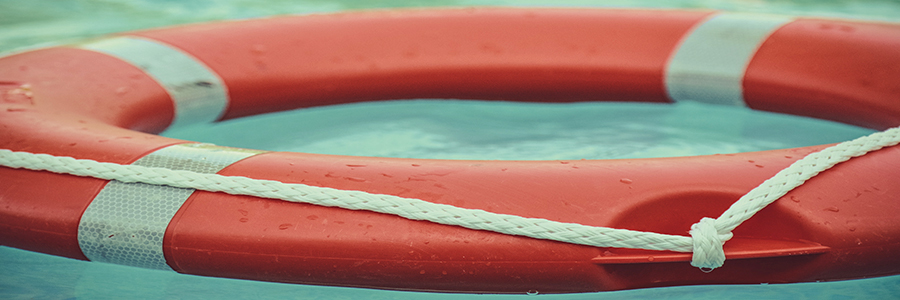It seems like every year, as soon as the warm weather hits, news outlets across country begin releasing reports of drowning deaths off the coast. Water safety and drowning prevention is a serious concern for ocean lovers all across the world, especially here on the Outer Banks where it isn’t uncommon for our beaches to experience strong rip currents and rough surf.
As of early October, there have been 85 surf fatalities in the United States in 2019, 17 in North Carolina alone. When you factor in inland rivers and lakes, pools, and other water sources, it’s no surprise that death by drowning is not that uncommon, so much so that drowning is actually ranked as the third leading cause of unintentional death globally. One Israeli company is trying to change that statistic.
New Ocean Rescue Technology
Sightbit is a team of four innovators from Israel who developed unique patent-pending technology designed to save lives. Sightbit is a “vision intelligence technology” that works similarly to a security camera or other camera system. The device monitors the coastline per the parameters set up by the user. However, it isn’t just a video camera. The technology hones in on several key aspects of water dangers that lifeguards are taught to look for: rip currents, swimmers going beyond certain boundaries, swimmers in distress, and children entering the water without an adult.
To develop this tech, dozens of lifeguards and marine safety personnel across the United States were interviewed about the current lifesaving systems in place. According to the Sightbit team, lifeguards are an effective tool for saving lives in theory. The reality is that lifeguards are human and one person cannot monitor a hundred+ people in an expansive area simultaneously, especially considering all they have is their own eyes and a pair of binoculars. Additionally, particularly in coastal areas, full-time lifeguards are expensive and many towns cannot afford to hire enough lifeguards to provide adequate protection meaning many stretches of beach are completely unmonitored. Although a trained lifeguard may be pretty quick at picking up on a potential problem, there is usually a slight delay caused by the simple need to focus in on a target. Unfortunately, there is very little room for error as seconds can be the difference between life or death.
Sightbit technology is able to keep a close watch on every person in a designated area at the same time and using image recognition technology, is trained to alert lifeguards when there is a hazard or potential hazard which could help them prevent a tragedy before it even happens. Unlike in a pool environment, in which conditions are fairly constant, the ocean is ever-changing and surf conditions are completely uncontrollable. The ocean is influenced by winds, currents, and other potential hazards. This uncertainty means lifeguards have the difficult task of not just keeping an eye out for manmade dangers (such as a child entering the water who can’t swim) but also for random dangers presented by nature (such as a strong wave knocking over an unsuspecting swimmer).
Benefits of Sightbit
That’s why Sightbit founders decided to build innovative, cost-effective, and potentially life changing technology. Per their website, it’s estimated that the device can save up to 40% of manpower costs currently spent on safety monitoring while still increasing the span of beach that can be monitored. It also features an in-depth analytic system to produce real-time data to help improve ocean safety across the globe. Essentially, it's a second set of eyes for lifesaving personnel with the unique ability to see everything and everyone at once.
Check out the Sightbit website for a video of how Sightbit works.
Future of Sightbit
So, is the future of lifesaving in the hands of artificial intelligence? Right now, Sightbit’s technology is still patent-pending and in the early stages of pilot testing. The developers are still ironing out details and using collected data from their testing locations across Israeli beaches along the Mediterranean Sea to improve algorithms in the hopes of nailing down all potential coastal hazards.
For now, you should continue to swim at a lifeguarded beach and exercise caution while swimming in the ocean at all times. However, as developers continue to contribute toward technology like Sightbit, currently the first and only of its kind, we may see a future where our lifeguards have a little help and one less family becomes a statistic.




